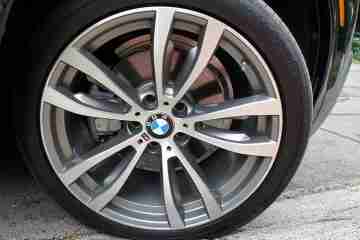How Long You Can You Drive on a Spare Tire 2022

How Long You Can You Drive on a Spare Tire?
You probably know this, but just in case: don’t drive too far on a spare tire. I’m talking about 50 miles, tops.
That’s because a spare tire isn’t meant to completely replace a tire. It’s more like a temporary fix, to tide you over until you can properly replace the tire. If you absolutely must go longer than 50 miles, avoid driving on it longer than 70 miles.
Anything more than that and you’re risking serious damage to your car—not to mention your safety. So next time you’re stuck with a flat, be sure to replace it with the nearest available spare as soon as possible.
What Is the Spare Tire?
You can usually drive around 50 miles on a spare tire, but that all depends on the type of spare you have. A donut-type spare is good for shorter distances, while a run-flat tire can get you a little bit further.
Just be sure to drive slowly and avoid any high speeds, since a spare tire isn’t meant for long-term use. It’s important to get the flat tire inspected and either repaired or replaced as soon as possible.
Why Is It Important to Know How Long You Can Drive on a Spare Tire?
You should know how long you can drive on a spare tire. Here’s why: Most space saver or “donut” spare tires are good for no more than 70 miles.
If you’re unlucky enough to get a flat, don’t ruin your day by driving too far on the donut. A general rule of thumb is to drive no farther than 70 miles and no faster than 50 miles per hour before replacing your donut with a new tire.
So before you hit the road, be sure to check your spare’s mileage rating and plan your route accordingly.
How to Check Your Spare Tire’s Air Pressure
When you’re checking your spare’s pressure, be sure to use a gage. If you don’t have a gage, you can find one at any gas station. Just inflate your spare to the pressure indicated on the sidewall of the tire.
If you’re ever in a situation where you have to use your spare, be very careful. Never drive over 50 mph, and try to keep your drive to under 50 miles. If you go over either of those thresholds, you could damage your spare and wind up stranded on the side of the road.
When to Replace Your Spare Tire
You should replace your spare tire when it no longer holds air or is damaged. | It is also a good idea to replace your spare tire every time you get a new car. | You can usually tell when a spare tire is no longer usable because it will be difficult to inflate and/or the sidewalls will be bulging.
FAQs About Driving on a Spare Tire
It’s not the end of the world if you get a flat tire. You can easily swap it out for the spare and be on your way. But just how long can you drive on that spare before you have to replace it?
Here’s the answer: a donut-style spare tire should only be used for driving 50 miles or less, at speeds 50 miles per hour or less. A full-size spare tire is ideal, and should allow for driving up to 70 miles.
But even with a full-size spare, it’s important to get it serviced as soon as possible. A worn-out spare can do more harm than good. So don’t wait until you’re stranded on the side of the road to replace it—plan ahead and schedule a service appointment today.
Conclusion
You should be able to drive on a spare tire for at least 50 miles, but it’s always a good idea to have a plan B just in case. If you’re ever in a bind and need to get somewhere, don’t be afraid to push your car to the limit – just make sure you’re aware of the risks involved.
If you don’t have a spare tire, or if your spare tire is flat, don’t panic. There are still plenty of ways you can get where you need to go. Try calling a friend or family member for a ride, or see if there’s a taxi service in your area. If all else fails, you can always try walking.
It’s always good to be prepared for the worst, so make sure you know how to change a flat tire before you head out on your next road trip. And most importantly, stay calm and don’t panic – you’ll get there eventually.













No Comment